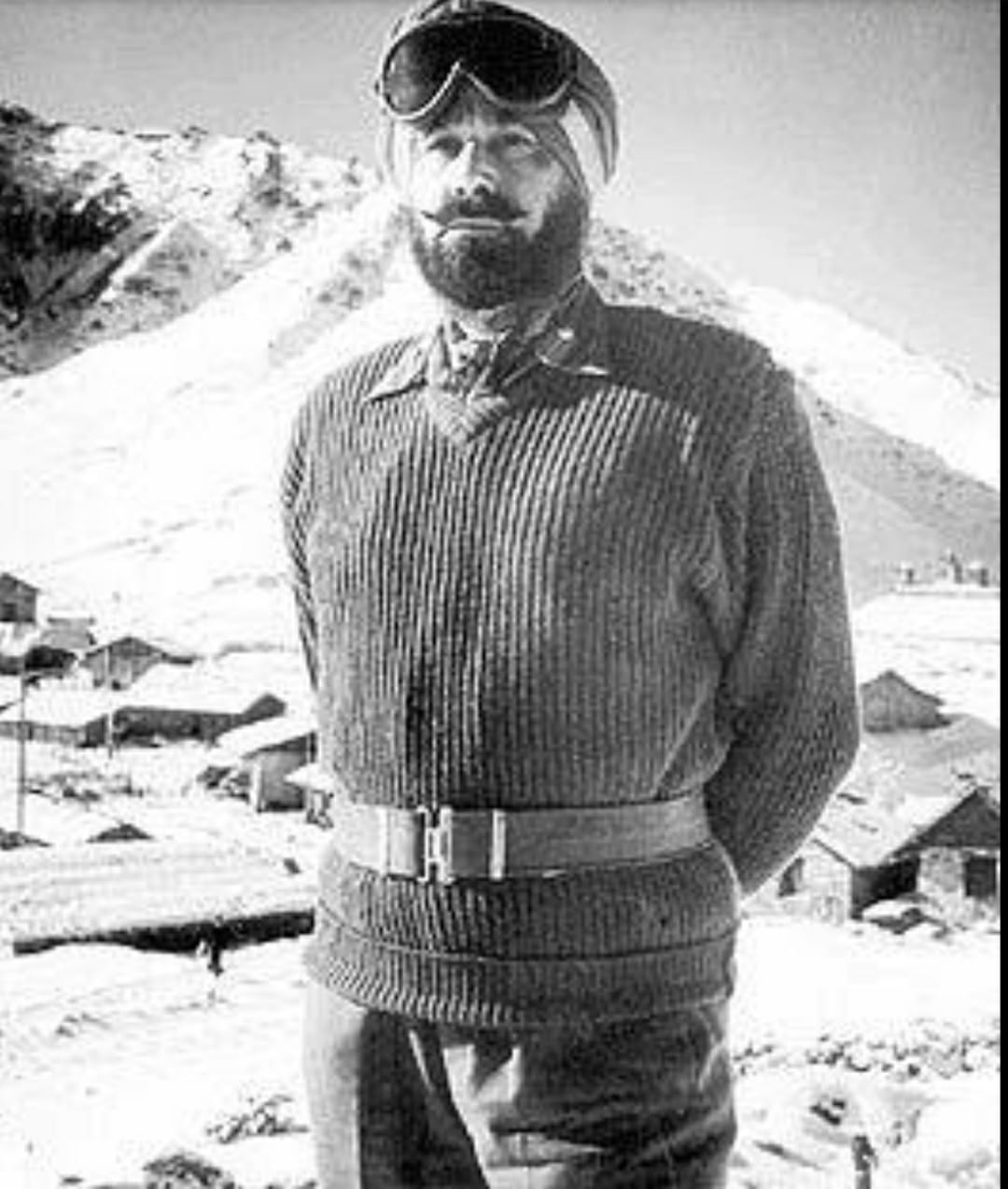BRIGADIER HARBAKSH SINGH (IC 31)
COMMANDER 163 BRIGADE (1948)

In May 1948, Brigadier Harbaksh Singh, Commander 163 Brigade, was ordered to advance and capture Tithwal with a view to capturing the enemy’s base from where he operated towards the Handwara valley and to cut his advance from Muzzaffarabad to Gurais. The tribesmen were then adopting guerilla warfare to infiltrate the Kashmir Valley.
On the night of 16 May, Brigadier Harbaksh Singh, leading his troops on foot, made a rapid advance through a very difficult terrain, including the crossing of the 11,000-ft. Nastachur Pass, and completely surprised the enemy who broke and withdrew in confusion and panic in all directions. Tithwal was thus captured on 23 May. The success of the operations was to a very great extent due to his personal leadership.
During the subsequent consolidation at Tithwal, when the enemy concentrated a stronger force and brought heavy fire to bear with numerous counter-attacks, Brigadier Harbaksh Singh visited every position placing troops on the ground and was frequently under enemy fire. To keep himself in touch with Divisional HQ he made frequent trips on foot unmindful of the danger of being ambushed as the line of communication was still exposed to enemy infiltration.
During these operations, Brigadier Harbaksh Singh showed gallantry and courage of a very high order and his personal appearance in forward posts, without regard for personal safety, considerably cheered the defenders.
After the Kashmir operations, he went on to serve as the Deputy Commandant of the Indian Military Academy, at the western command headquarters, director of infantry at the Army headquarters, and in 1957 attended a course at the Imperial Defence College (now Royal College of Defence Studies) in the United Kingdom. In January 1959, he became the first foreign officer to go on attachment with German Army’s first division to be raised after their disbandment at the end of World War II.
He returned to India to take over as the General Officer Commanding (GOC) the 27 Infantry Division, and later as the GOC 5 Infantry Division. From July 1961 to October 1962, he was the Chief of Staff at the Western Command headquarters.
When the Chinese invaded NEFA and Ladakh, he was moved from Shimla to take over the command of IV Corps. He later he moved as the GOC XXXIII Corps.
Indo-Pakistani War of 1965[edit]
In 1964, he was promoted to Army Commander and took over as the General Officer Commanding-in-Chief (GOC-in-C) of the Western Command whose area of responsibility spanned from Ladakh to Punjab. He led the Western Command successfully against the Pakistan Army along the entire border in the Indo-Pakistani War of 1965.
Around May 12, 1965, Brigade Commander, Vijey Ghai in Kargil convened a conference at HQ. The agenda was not revealed but it started with him reading out the contents of Lt. Gen Harbaksh Singh GOC-in-C Western Command, DO (demi official note) to the forces. The Army Commander had reviewed recent skirmishes in Rann of Kutch and commented that the Pakistanis were continuing with their belligerent attitude and spoke about cultivating a more aggressive spirit in out troops. He also remarked pointedly “has the martial blood in the veins of the Indian Army soldiers dried up” or words to the similar effect.[19] The operations that followed including the Taking of Point 13620 and Black Rocks was a major boost for the Indian forces. Per the official account of the War,[20] this was the first counter-offensive undertaken by Indian troops in years. Its success had a good effect on the morale of the troops in J&K and the Army as a whole. Politically it bolstered the image of the country. The outstanding leadership of Lt Gen Harbaksh Singh had played a key role in boosting the morale of a defeated army turning it into a striking force within just three years of the Chinese encounter.
After serving as the General-Officer-Commanding-in-Chief of the Western Army Command from 1964 to 1969, the General retired in September 1969. Captain Amarinder Singh (later Chief Minister of Punjab) of Patiala served him as his ADC.
